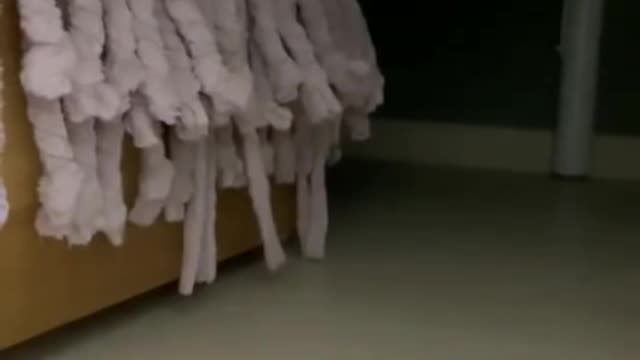Premium Only Content

cute little cate short
It is estimated that the ancestors of most big cats split away from the Felinae about 6.37 million years ago.[4] The Felinae, on the other hand, comprises mostly small to medium-sized cats, including the domestic cats, but also some larger cats such as the cougar and cheetah.[5]
A 2010 study published in Molecular Phylogenetics and Evolution has given insight into the exact evolutionary relationships of the big cats.[6] The study reveals that the snow leopard and the tiger are sister species, while the lion, leopard, and jaguar are more closely related to each other. The tiger and snow leopard diverged from the ancestral big cats approximately 3.9 Ma. The tiger then evolved into a unique species towards the end of the Pliocene epoch, approximately 3.2 Ma. The ancestor of the lion, leopard, and jaguar split from other big cats from 4.3–3.8 Ma. Between 3.6–2.5 Ma the jaguar diverged from the ancestor of lions and leopards. Lions and leopards split from one another approximately 2 Ma.[7] The earliest big cat fossil, Panthera blytheae, dating to 4.1−5.95 MA, was discovered in southwest Tibet.[8]
The ability to roar comes from an elongated and specially adapted larynx and hyoid apparatus.[9] The larynx is attached to the hyoid bone that is hanging from a sequence of bones. This sequence of bones the hyoid hangs from are tympanohyal, stylohyal, epihyal, and ceratohyal; these are located in the mandible and skull.[10] In the larynx there are vocal folds that produce the structure needed to stretch the ligament to a length that creates the roar effect. This tissue is made of a thick collagen and elastic fiber that becomes denser as it approaches the epithelial mucosal lining.[11] When this large pad folds it creates a low natural frequency, causing the cartilage walls of the larynx to vibrate. When it begins to vibrate the sound moves from a high to low air resistance which makes the roaring.
The lion's larynx is longest, giving it the most robust roar. The roar in good conditions can be heard 8 or even 10 km away.[12] All five extant members of the genus Panthera contain this elongated hyoid but owing to differences in the larynx the snow leopard cannot roar. Unlike the roaring cats in their family, the snow leopard is distinguished by the lack of a large pad of fibro-elastic tissue that allows for a large vocal fold.
-
 LIVE
LIVE
SpartakusLIVE
5 hours agoThe Conqueror of Corona || Delta Force LATER
445 watching -
 2:17:30
2:17:30
barstoolsports
8 hours ago$250k Winner Revealed With Final Votes And Reunion | Surviving Barstool S4 Finale
58.6K4 -
 2:05:49
2:05:49
Kim Iversen
6 hours agoTikTok Ban BACKFIRES: Millions Flee To New App Showing The REAL China
57.8K65 -
 1:35:12
1:35:12
Glenn Greenwald
8 hours agoCNN And Jake Tapper In Deep Trouble In Defamation Lawsuit: With Jonathan Turley; TikTok Ban, Trump's China Policy, And More With Arnaud Bertrand | SYSTEM UPDATE SHOW #390
78.1K37 -
 12:24
12:24
Dan Bongino Show Clips
8 hours agoPresident Trump Full Interview - 01/16/25
101K276 -
 DVR
DVR
Man in America
8 hours agoBig Pharma's Deadliest Lie is Being EXPOSED to the Masses w/ Jonathan Otto
18.9K8 -
 1:40:08
1:40:08
Precision Rifle Network
1 day agoS4E2 Guns & Grub - Training Vs. Competition
9.63K -
 58:27
58:27
Flyover Conservatives
22 hours agoGarrett Ziegler Breaks Down Special Councilor’s Report on Hunter Biden. Insights for Trump’s Top Picks. | FOC Show
37.4K1 -
 44:54
44:54
Steve-O's Wild Ride! Podcast
11 hours ago $6.40 earnedMark Wahlberg Threatened To Beat Up Jackass Cast Member - Wild Ride #251
94.1K10 -
 1:13:34
1:13:34
Josh Pate's College Football Show
5 hours ago $0.42 earnedCFB Dynasties & Villains | Marcus Freeman OR Ryan Day | 2025 Sleeper Teams | Cole Cubelic Joins
18.4K